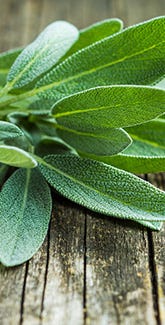How to Grow Beets
All About Beets
Beets have been around for centuries, but have enjoyed a rapid increase in popularity in recent years thanks to their variety, versatility, and countless health benefits. While red beets are probably the best known, their white, golden-yellow, and orange relatives are definitely making a name and place for themselves in the garden and on the table. These versatile veggies and their greens can be eaten raw or cooked, allowing for a lot of creativity in the kitchen and a broad range of flavors for pleasing everyone's palate.
Beets are easy to grow if you remember that they strongly prefer cool or cold temperatures. They make a good early spring crop and an excellent fall crop. They can withstand repeated frosts and even small snowfalls.
How to Plant & Grow Beets
-
Soil: Beets like sandy loam soils but will also grow in other soil types. They can grow in clay soils, but dense clay will produce tough, stringy beets, and if the soil is too rich, the beets will go to seed quickly.
If planting a spring crop, prepare your beet bed about 2-4 weeks before the last frost and as soon as the ground can be worked. Mix compost, dried manure, or organic fertilizer into the soil along with some bone meal to encourage root growth. If you want a fall crop as well, plant seeds about 6-8 weeks before the first frost. -
Sowing Seeds: Soak the beet seeds overnight before planting. Beet seeds tend to clump, which is perfectly fine (and actually preferred). Simply plant each seed clump about ½ inch deep and 2 inches apart, in rows 18-24 inches apart. Thin your beet seedlings to about 3 inches apart once germination has occurred.
Beets can also be grown in containers. Plant about 20 seedlings to any container at least 18-24 inches in diameter, and later thin to 10 plants. - Growing: Thinning is important with beet seedlings. Each beet seed can actually contain as many as eight little beet seeds inside, so you can expect quite a few plants to form -- making thinning a good idea. If you're careful when you thin, the uprooted seedlings can be saved for planting in a different area about two weeks later.
-
Harvesting: Once beet roots have developed to approximately half their full size, cut the leafy green tops off and use as salad or cooked greens. If further thinning is required, the baby beets can be cooked or used in salads. Beets are best eaten young, because they tend to toughen with age.
Fall beets taste sweeter and store better if they are allowed to experience several light frosts.
Did You Know? Fun Facts About Beets
The red beet is a native of the seacoast of the south of Europe. It was cultivated in England in 1656, and then called "beet rave" or "beet radish," adopted from the French name for beets: "betterave."



